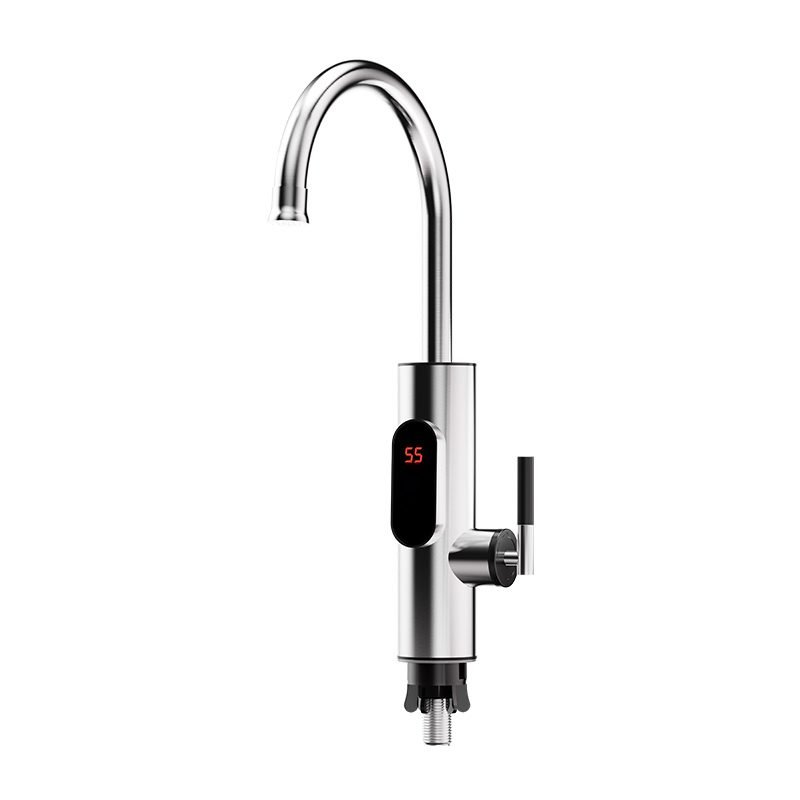The Convenience and Innovation of Electric Faucets
2025-04-09
In recent years, the way we interact with everyday appliances has evolved dramatically. One of the most notable innovations in home technology is the electric faucet. These modern faucets are designed to enhance convenience, hygiene, and energy efficiency in the kitchen and bathroom. With their sleek designs and advanced features, electric faucets are becoming increasingly popular in homes, hotels, and businesses worldwide.
What is an Electric Faucet?
An electric faucet, also known as a touchless or sensor faucet, uses an integrated electric system to control the flow of water. Unlike traditional faucets that require manual handling, electric faucets are activated by sensors or touch controls. They can be installed in both residential and commercial settings, offering a level of convenience that was previously unavailable with standard faucets.
Electric faucets typically include features like temperature control, touchless operation, and energy-saving modes. These faucets can be powered by batteries or an electrical connection, depending on the model. Some advanced versions even include water filtration systems or instantaneous water heating, making them a versatile addition to modern homes.
Benefits of Electric Faucets
1. Enhanced Hygiene: One of the primary advantages of electric faucets is their ability to reduce contact with surfaces. With touchless activation, you never have to physically touch the faucet, which helps prevent the spread of germs and bacteria, especially in public restrooms or kitchens. This is particularly beneficial in preventing cross-contamination when cooking or after handling raw food.
2. Convenience: Electric faucets are designed to make everyday tasks easier. Whether you’re washing your hands, rinsing dishes, or filling up a container, the touchless feature makes it quick and effortless. In addition, many models allow you to adjust water temperature and flow rate with just a simple gesture or press of a button, providing a personalized experience.
3. Water and Energy Efficiency: Electric faucets often come with built-in features that conserve water and energy. Many models include sensors that automatically stop the flow of water once your hands or objects are removed, reducing water waste. Furthermore, faucets with instantaneous water heaters can provide hot water on demand without the need for a traditional water heater, saving energy and lowering utility bills.
4. Sleek and Modern Design: The aesthetic appeal of electric faucets is another reason for their growing popularity. These faucets often have a sleek, modern look that complements contemporary home and bathroom designs. They come in a variety of finishes, including stainless steel, chrome, and matte black, allowing homeowners to choose a style that fits their decor.
5. Customization and Advanced Features: Many electric faucets offer customizable features like adjustable water temperature, flow rate, and even the option for hands-free operation. Some models come with touch panels or LED displays to indicate the temperature or water usage, giving users complete control over their water usage. More advanced systems even offer filtration options, providing clean and safe drinking water directly from the faucet.
Applications of Electric Faucets
Electric faucets are used in a variety of settings due to their versatility and functionality.
- Residential Homes: In kitchens and bathrooms, electric faucets are perfect for busy families who want to reduce water waste and increase convenience. The touchless functionality is especially useful for cooking and cleaning, where maintaining hygiene is essential.
- Commercial Spaces: Restaurants, hotels, and office buildings benefit from electric faucets as they can improve the customer experience by offering easy-to-use, hygienic faucets. They also help businesses reduce water consumption, which is a key factor in lowering operational costs.
- Public Restrooms: Electric faucets are commonly found in public restrooms, where hygiene and ease of use are a priority. With touchless activation, these faucets reduce the need for maintenance and prevent the spread of germs, making them ideal for high-traffic areas.
- Healthcare Facilities: Hospitals and medical centers use electric faucets to improve sanitation and reduce the risk of infection. By minimizing the need to touch faucet handles, electric faucets help maintain a sterile environment in sensitive areas like operating rooms and patient care areas.
How to Choose the Right Electric Faucet
When selecting an electric faucet, it’s important to consider factors such as water temperature control, power source, and style. Here are a few things to keep in mind:
1. Power Source: Electric faucets can be powered by batteries or through a direct electrical connection. Battery-powered faucets are easier to install but may require regular battery changes. Hardwired models provide a more consistent power supply but may need professional installation.
2. Water Temperature Control: Some electric faucets offer instant hot water, while others may require a separate water heater. If you need hot water quickly, look for a faucet that includes this feature to save time and energy.
3. Sensor Sensitivity: The sensitivity of the sensor can affect the responsiveness of the faucet. It’s important to choose a model with an adjustable sensor that detects motion efficiently, so you don’t waste water or struggle to activate the faucet.
4. Design and Finish: Electric faucets come in various designs and finishes to suit different home decors. Consider your existing fixtures and choose a faucet that complements your style, whether you prefer a modern, minimalist design or a more traditional look.
The Future of Electric Faucets
As technology continues to advance, the functionality of electric faucets will keep improving. Future models are likely to include even more energy-efficient features, such as smart sensors that adjust the water flow based on usage patterns. Additionally, integration with home automation systems may become more common, allowing users to control their faucet with voice commands or smartphone apps.
In conclusion, electric faucets represent the future of modern plumbing, combining convenience, hygiene, and sustainability into one easy-to-use product. Whether in the kitchen, bathroom, or commercial space, they offer a host of benefits that make everyday tasks easier and more efficient. With continued innovation, we can expect electric faucets to become even more sophisticated, further enhancing our daily lives.



